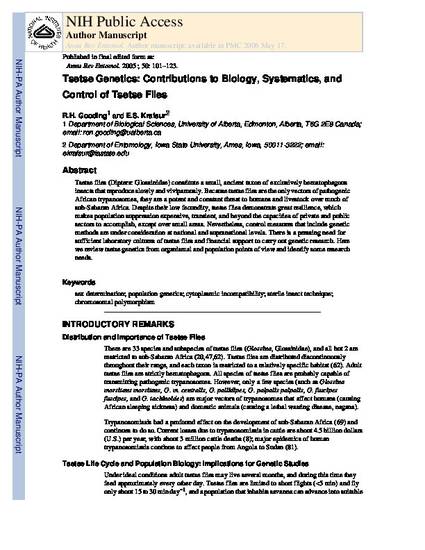
Tsetse flies (Diptera: Glossinidae) constitute a small, ancient taxon of exclusively hematophagous insects that reproduce slowly and viviparously. Because tsetse flies are the only vectors of pathogenic African trypanosomes, they are a potent and constant threat to humans and livestock over much of sub-Saharan Africa. Despite their low fecundity, tsetse flies demonstrate great resilience, which makes population suppression expensive, transient, and beyond the capacities of private and public sectors to accomplish, except over small areas. Nevertheless, control measures that include genetic methods are under consideration at national and supranational levels. There is a pressing need for sufficient laboratory cultures of tsetse flies and financial support to carry out genetic research. Here we review tsetse genetics from organismal and population points of view and identify some research needs.
Available at: http://works.bepress.com/elliot-krafsur/53/

This is a manuscript of an article published as Gooding, R. H., and E. S. Krafsur. "Tsetse genetics: contributions to biology, systematics, and control of tsetse flies." Annu. Rev. Entomol. 50 (2005): 101-123. doi: 10.1146/annurev.ento.50.071803.130443. Posted with permission.